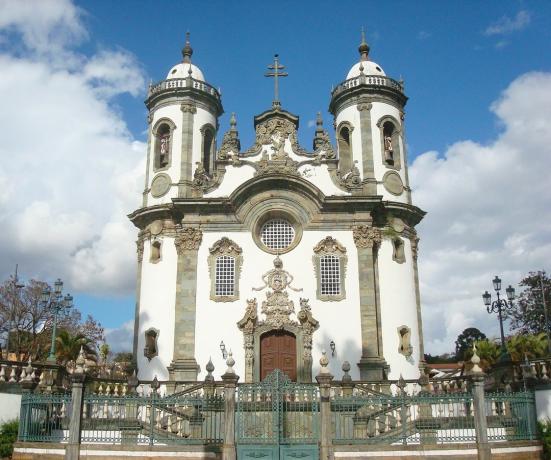visual arts is the name given to the set consisting of architecture, a sculpture, at graphics it's the artistic crafts.
The plastic arts are characterized, like the other arts, both globally and individually, by the reciprocal effect of form and content. In the evolution of artistic styles there are special characteristics of historical development. Each period, such as Romanesque, Gothic, Baroque or Renaissance, has characteristic regional (national) and individual, with their own evolution and linked to isolated artistic individuals, whose investigation is part of history of art.
The fact that the principle of harmony inherent in a work of art is not always linked to the current conception of beauty determined by ideals classics, is already observed in the art of prehistoric cultures: separation between surface and form, for example, in cave images and utensils of the it was glacial. It is found both in the art of primitive peoples, which serves the purposes of magical worship, and in popular art, in works of art in churches and courts and in the imagery expression of children, and the purpose of all branches of art education is to assist the development of the unconscious impulse of creation.
The logic of the progression of the development of stylistic forms through the stages of youth, maturity, adulthood and old age, as well as the importance of the context of social relationships, political and religious, are also determining factors of all arts and artistic works, whether their purpose is to serve, educate, criticize or just suggest or portray the relationships temporal.
The Christian faith, and in particular the liturgical life, constituted, until the beginning of the Baroque period, the most important forces in promoting Western art. However, since the Renaissance there was a gradual separation of art from its purpose until then predominantly religious, while the interest in purely work aesthetic. The extreme consequence of this development was the emergence, in the 19th century, of the ideology of art for art, which, however, became less concrete in the plastic arts than in literature and music.
Art schools and academies were dedicated to teaching the fine arts. Museums, which often have their origins in private foundations, have the mission of caring for the artistic heritage of the past and preserving important testimonies of contemporary art. They make paintings, sculptures, graphic works and crafts accessible to the public in an orderly way. artistic, carry out the necessary restorations and often organize special exhibitions and itinerant. The monument maintenance services take care of the conservation of immovable historical monuments. The public art conservation services also make contracts with famous artists, transmit knowledge in the field of education of youth and adults, edit publications and exchange scholarship holders, results of scientific investigations and collections with the foreign.
Local art associations, which, guided by private foundations and public grants, are dedicated to essentially to exhibitions and conferences, since the 18th century they occupy an important place in conservation and promotion of art.
Art critics inform the public about contemporary art events and issues in the form of evaluative criticism. They do not limit themselves to commenting on exhibitions and similar manifestations, but exercise an artistic pedagogy. Since 1948, the International Association of Art Critics has been the international organization that encompasses all critics' associations.
See also the meaning of Art Nouveau.

